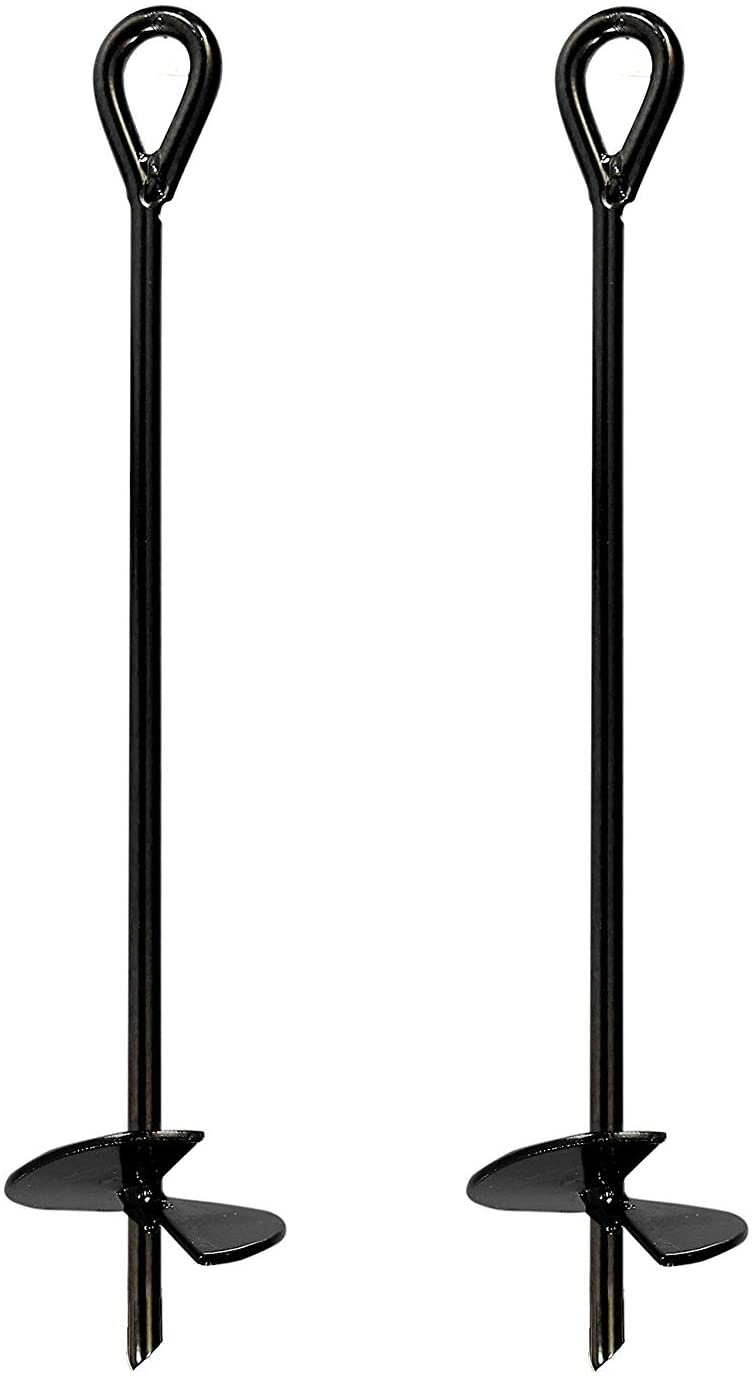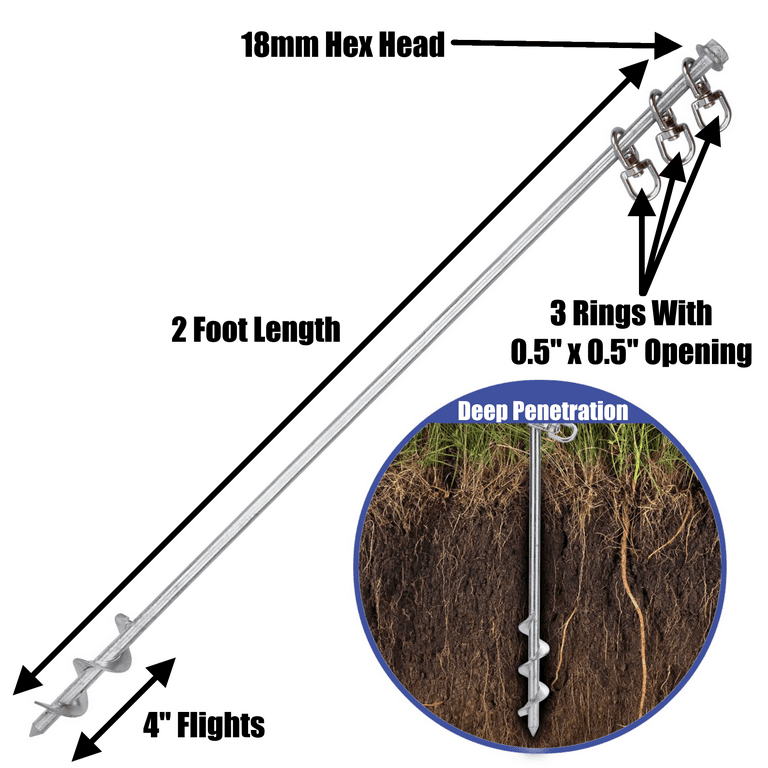Factors to Consider Before Purchasing a Heavy-Duty Ground Anchor
Factors to Consider Before Purchasing a Heavy-Duty Ground Anchor
Blog Article
Explore the Various Types of Ground Anchor for Your Following Project
When beginning on a construction or landscape design job, recognizing the various types of ground anchors available is critical to making certain both security and longevity (Ground Anchor). From auger supports, which succeed in diverse dirt problems, to stake supports designed for short-lived installations, the choices are many. Furthermore, concrete and screw anchors present unique advantages in particular situations, while deadman supports are tailored for applications calling for resistance to side forces. The choice of a suitable anchor type can substantially influence the total success of your task, prompting more exploration into their respective benefits and applications.

Auger Anchors
Auger anchors are a popular option in numerous construction and landscaping tasks because of their one-of-a-kind design and effective securing capacities. These anchors are composed of a helical screw-like shaft that is driven right into the ground, permitting a stable and secure hold. The spiral style promotes simple installation and optimizes resistance versus side forces, making auger supports especially effective in applications such as fence, momentary structures, and disintegration control.
The installment procedure of auger supports is fairly uncomplicated. They can be by hand or mechanically set up, depending upon the dimension and required depth. This versatility permits their usage in diverse soil problems, from sandy to clayey surfaces. Furthermore, auger supports can be easily removed and reused, which adds to their cost-effectiveness and sustainability.
Among the significant benefits of auger supports is their capacity to distribute loads equally across the bordering dirt, reducing the risk of dirt disturbance and lessening ecological effect. Furthermore, they are much less at risk to heaving or loosening up with time compared to typical anchoring techniques. Auger supports are an excellent option for jobs calling for dependable and sturdy anchoring solutions.

Risk Anchors
When it pertains to securing frameworks in a variety of exterior applications, risk anchors offer a reputable and straightforward service. These anchors are usually created from sturdy materials such as steel or light weight aluminum, designed to hold up against ecological stress and anxieties while providing ideal security. Their basic layout permits fast setup, making them a suitable selection for long-term or short-term anchoring needs.
Stake anchors are especially beneficial in protecting tents, canopies, and other lightweight frameworks versus wind and weather. They work by being driven right into the ground at an angle, creating a strong hold that resists pull-out pressures - Ground Anchor. The performance of stake anchors relies on several aspects, consisting of dirt type, dampness material, and the angle of installation
For included safety and security, lots of risk anchors include add-on points for ropes or bands, permitting for tension modifications as needed. In applications such as landscaping or building and construction, they can properly stabilize tools or structures on unequal terrain. On the whole, risk anchors provide a cost-efficient and versatile remedy for safeguarding numerous exterior setups, making them a recommended selection for service providers and do it yourself enthusiasts alike.
Concrete Anchors
Concrete anchors give a durable option for protecting structures to concrete surface areas, ensuring security and safety and security in numerous applications. These anchors are crucial for tasks ranging from property buildings to large-scale industrial installments. They are available in various kinds, including development anchors, glue supports, and undercut supports, each designed for particular load requirements and ecological problems.
Adhesive supports make use of high-strength epoxy or material to bond the support to the concrete, providing premium load-bearing capabilities, especially in cracked concrete circumstances. Undercut anchors produce an unique form within the concrete, offering extraordinary holding power, specifically in applications where tensile tons are common.
Picking the ideal concrete anchor includes considering aspects such as the weight of the load, the problem of the concrete, and environmental problems. Proper installation methods are important to guarantee optimum performance and reliability. When carried out appropriately, concrete anchors substantially enhance the architectural honesty of various tasks, making them indispensable in contemporary building and construction techniques. Understanding the specific demands of your job will aid in choosing the appropriate kind of concrete anchor for the task.
Screw Anchors

Screw anchors are a flexible securing service that can be successfully used in a selection of applications where traditional concrete anchors might not be enough. These supports include recommended you read a helical style that permits them to be easily driven right into the ground, making them suitable for use investigate this site in dirt and various other substratums. Their unique framework provides outstanding holding power and resistance to pull-out pressures, making them appropriate for countless projects, from landscape design to architectural support.
One of the main benefits of screw anchors is their ease of installment. They require minimal tools and can commonly be installed without the demand for excavation, which conserves both time and labor prices. In addition, screw supports can be removed and recycled, offering a lasting solution for temporary applications.
Screw anchors are particularly beneficial in areas where dirt conditions are challenging, such as loosened or sandy dirts. Their capability to be mounted at varying depths enables modification based on specific job requirements. In general, screw anchors provide a reputable and efficient anchoring method, making them an exceptional selection for engineers and professionals looking for reliable options for their jobs.
Deadman Anchors
Deadman supports function as a robust remedy for maintaining frameworks in tough problems, particularly where traditional anchoring methods might fail. These supports contain big, heavy items hidden underground, which create resistance versus lateral forces. The design normally entails a straight element, such as a block of concrete or a metal plate, buried in the soil, to which bands or cable televisions are connected.
The efficiency of deadman supports lies in their capability to distribute tons over a bigger area, lowering the danger of failure in unpredictable soil conditions. They are especially beneficial in applications such as keeping walls, temporary frameworks, and incline stabilization, where dirt motion can compromise the honesty of the structure.
Installation of deadman supports calls for careful planning to ensure they are put at the proper deepness and orientation, optimizing their load-bearing capacity. While they may require even more labor and material than lightweight anchors, their dependability in negative problems makes them invaluable for long-term jobs. Deadman supports are flexible and can be adapted to numerous applications, making them a best choice for designers encountering special challenges in their tasks.
Conclusion
Auger supports succeed in varied dirt problems, while stake supports match short-term applications. For concrete surface areas, development and adhesive anchors supply dependable alternatives, and screw anchors use convenience in challenging terrains.
In addition, concrete and screw supports present unique benefits in details situations, while deadman supports are customized for applications requiring resistance to lateral pressures - Ground Anchor.Auger supports are a prominent choice in numerous construction and landscape design tasks due to their one-of-a-kind design and efficient securing capabilities. They come in various kinds, consisting of development supports, sticky anchors, and undercut anchors, each developed for go now particular load demands and environmental problems
Sticky supports make use of high-strength epoxy or material to bond the anchor to the concrete, offering premium load-bearing capacities, specifically in fractured concrete scenarios. On the whole, screw supports give a dependable and reliable securing approach, making them a superb choice for designers and professionals seeking reliable solutions for their projects.
Report this page